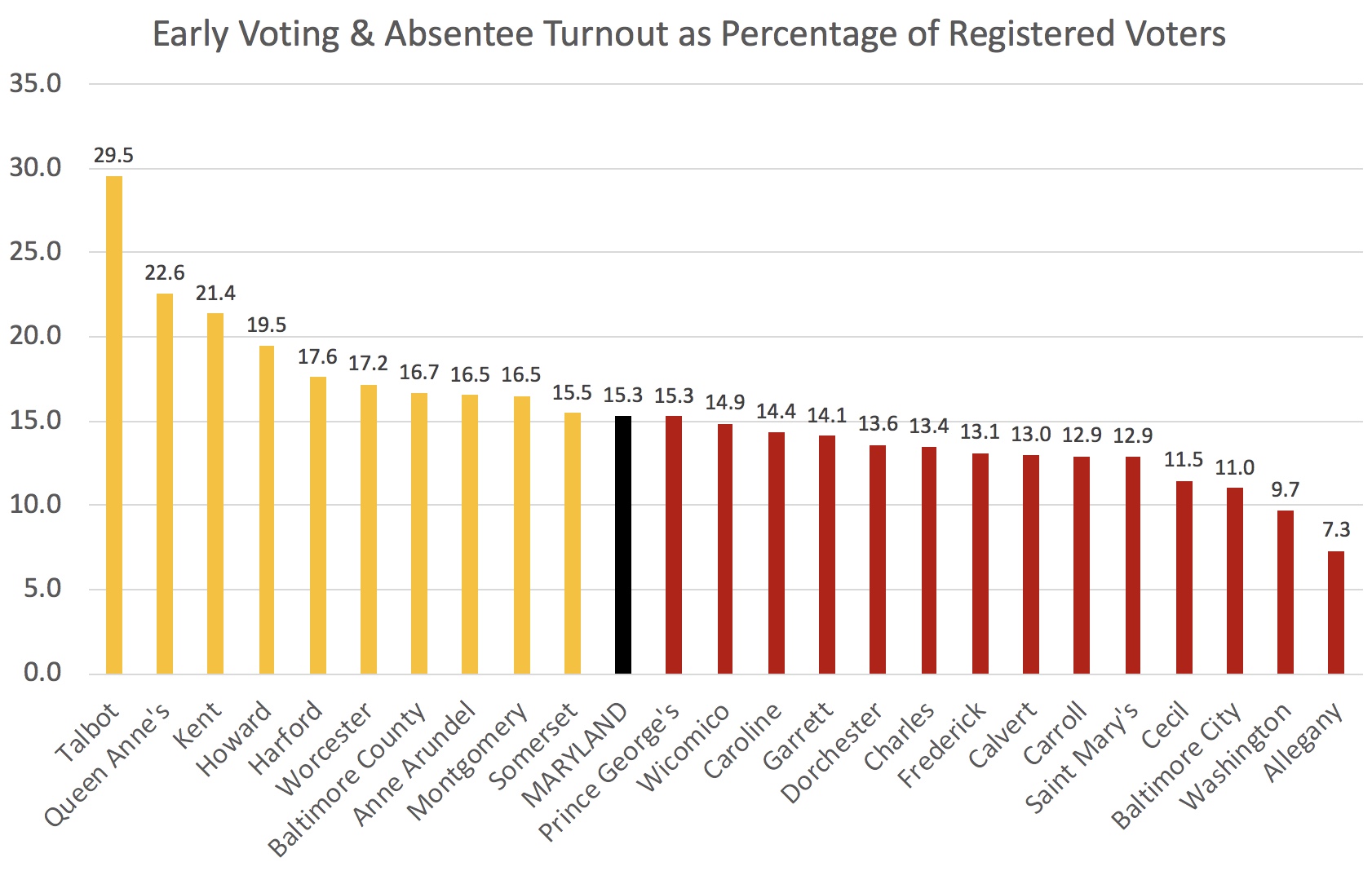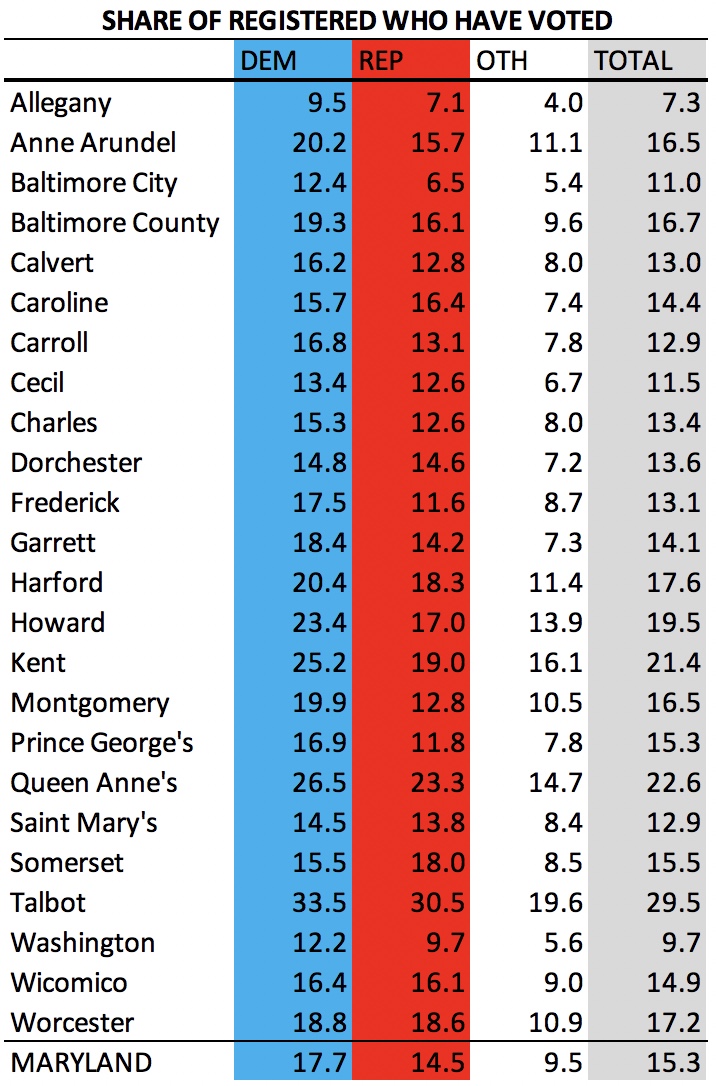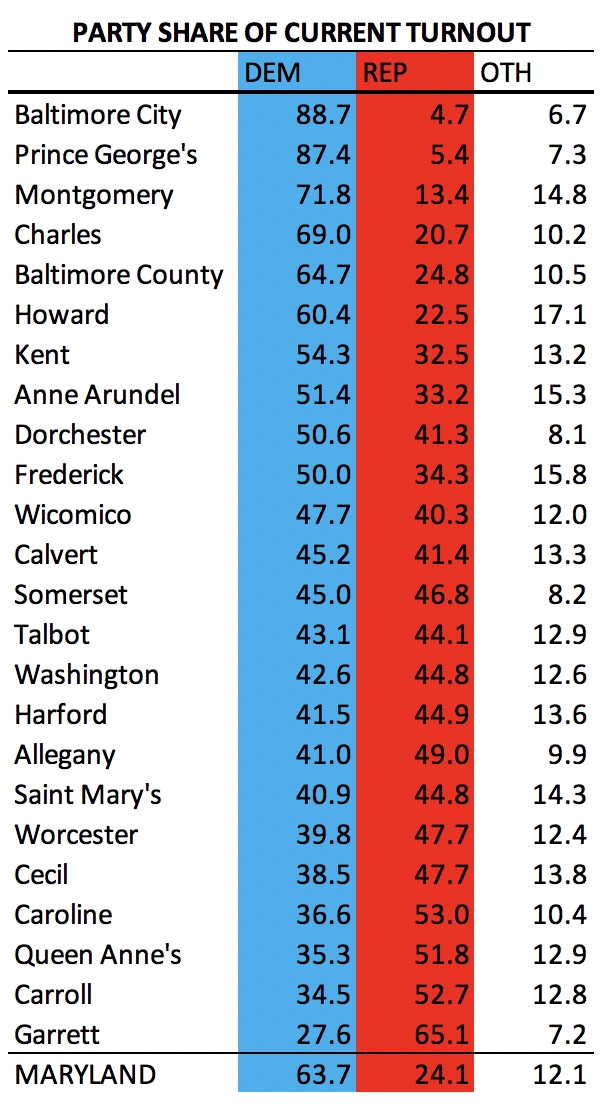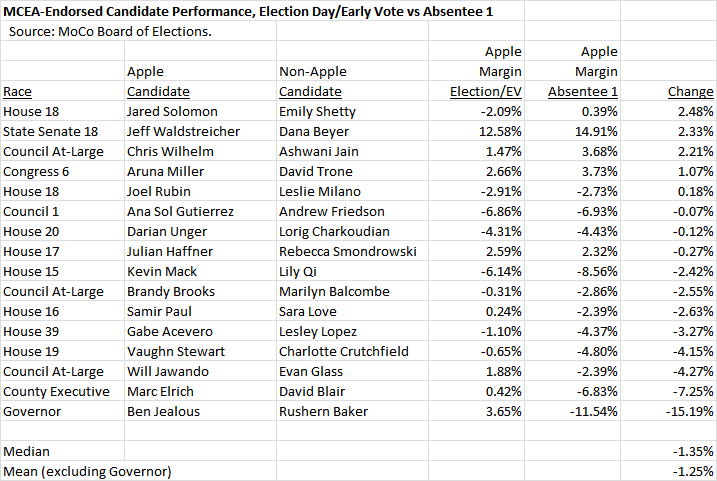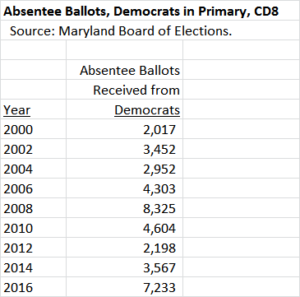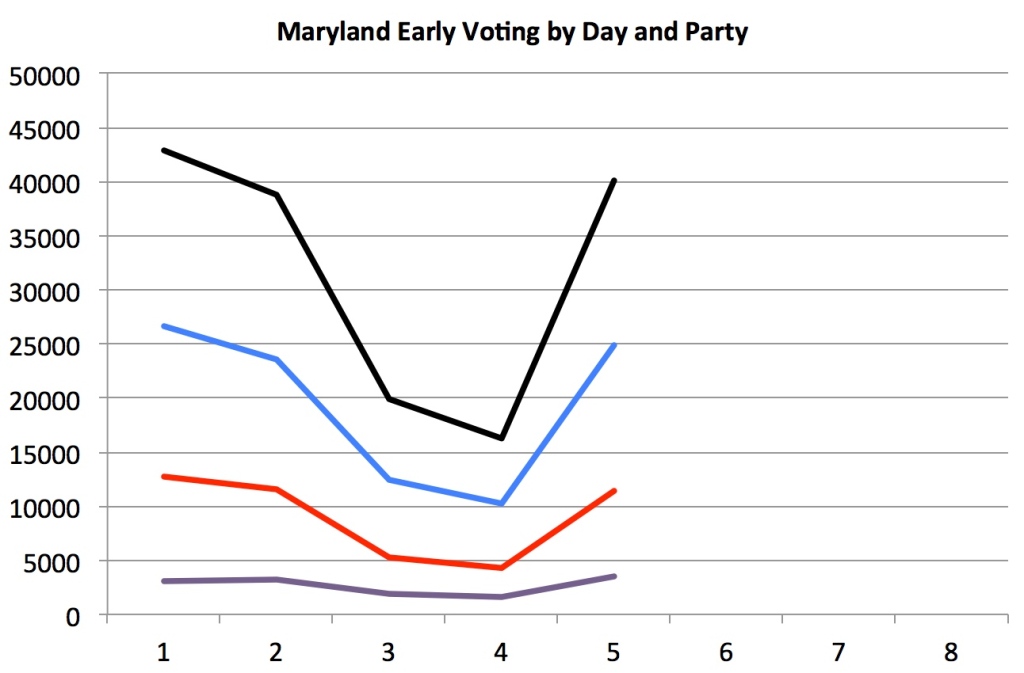
Black = All, Blue = D, Red= R, Purple = Unaffiliated
Good news. After a weekend off, the early vote bounced back to the second highest yet with 40,081–1.1% of all eligible voters–casting early votes on Monday. A total of 157,884, or 4.3% of all eligible voters, have cast ballots so far. Additionally, 22.297, or 0.6% of all eligible voters, have returned absentee ballots.
Good News for Democrats
The increase in early vote numbers is helpful to Democrats. If 40,000 people turn out each of the next three days, the total number of early voters will rise by around 58,000 over 2010. As Democrats comprise a disproportionate share of registered voters, the increase will likely result in an bump up for the raw votes banked by Democrats. Even though Democrats seem to have lost most of their early vote turnout advantage from 2010, they still have a good shot at increasing the total votes won through early voting.
Absentee Votes
Today’s table includes absentee ballots as well as early votes, so the rankings are not strictly comparable to yesterday’s table. However, the incorporation of absentee votes does not alter the overall picture greatly. The number of absentee voters is smaller than it used to be thanks to early voting.
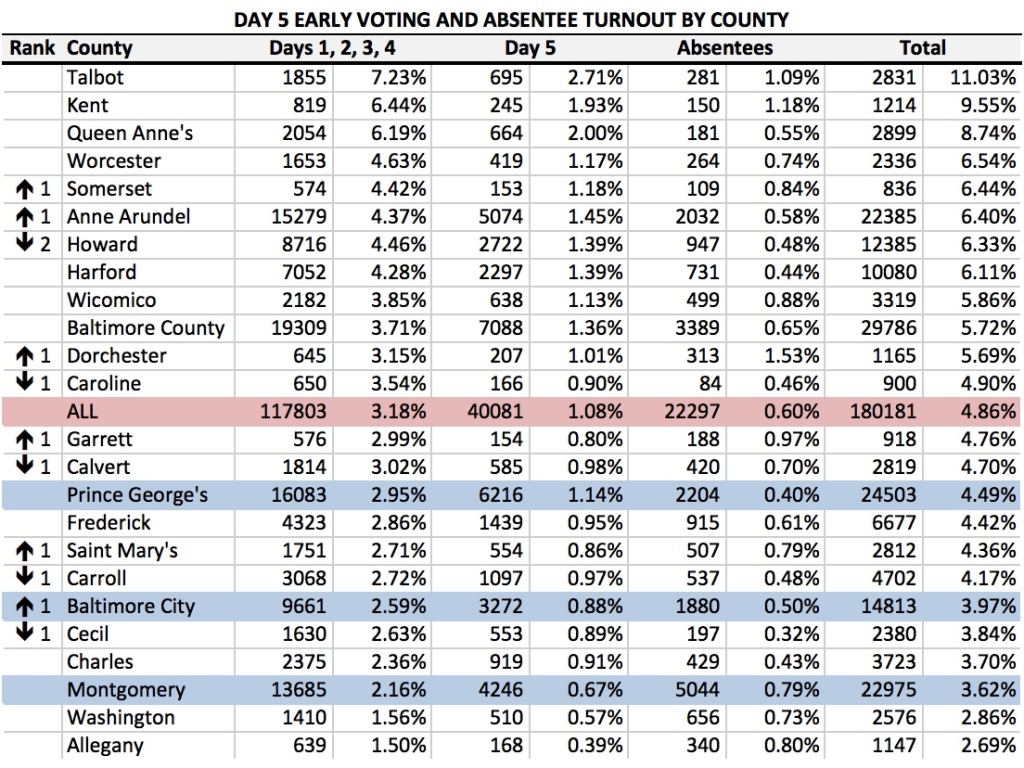
Party Breakdowns
The number of registered Democrats (97,777) who have voted early far exceeds the number of registered Republican (45,219) or unaffiliated (13,341) who have cast early ballots. The percentage of registered Democrats edged further above that of Republicans but only by an infinitesimal amount as the gap is now 0.04%.
Republicans and unaffiliated are approaching their 2010 early vote totals at a faster rate than Democrats. While the number of early Democratic voters is 69.7% of their 2010 total voters, Republicans have already reached 77.3% with unaffiliated at 72.8%.
So even though Democrats may benefit from the increase number of voters, as explained above, the closure of the gap with Republicans suggests that they will benefit less than they might and certainly less than they hoped. The poor performance in Montgomery remains especially disappointing to Team Blue, although it is performing better with absentee than early voting.
Doing Best in the Base
Both parties seem to be turning out voters at a higher rate in their base counties. Consider that the rate of registered Democratic turnout exceeds that of Republicans by 1.89% in Baltimore City, 1.46% in Prince George’s, 1.26% in Howard, 1.01% in Montgomery, and 0.39% in Charles. On the other hand, registered Republican turnout exceeds that of Democrats by 1.97% in Talbot, 1.10% in Worcester, 1.10% in Wicomico, 0.56% in Queen Anne’s, 0.46% in Garrett, and 0.45% in Harford.
Turnout in Key Legislative Districts
District 3: 1669 D, 1083 R, 397 U (52.7% D)
District 6: 1992 D, 1120 R, 258 U (58.4% D)
District 8: 1920 D, 1250 R, 274 U (54.9% D)
District 9: 2492 D, 2197 R, 615 U (46.3% D)
District 12: 2770 D, 918 R, 381 U (67.1% D)
District 29: 1172 D, 1187 R, 264 U (44.2% D)
District 30: 3042 D, 2270 R, 690 U (50.5% D)
District 34: 2063 D, 1719 R, 470 U (47.8% D)District 38: 1893 D, 1984 R, 388 U (43.6% D)
District 42: 1673 D, 1118 R, 246 U (53.8% D)
Democrats form a majority of early voters in D3 (Young), D6 (Olszewski v. Salling), D8 (Klausmeier), D12 (Kasemeyer), D30 (Astle), and D42 (Brochin).
The numbers are most dangerous for incumbent Democrats in D29 (Dyson) and D38 (Mathias). In these two districts, more registered Republicans have voted than registered Democrats.
In D9 (Frederic v. Bates) and D34 (James v. Cassilly), the numbers are in between–Democrats are a plurality but not a majority. Del. Mary-Dulany James is probably stronger in D34 because of her long history representing this swing territory and appealing to unaffiliated voters. Del. Gail Bates likely has the edge in D9 for similar reasons.


